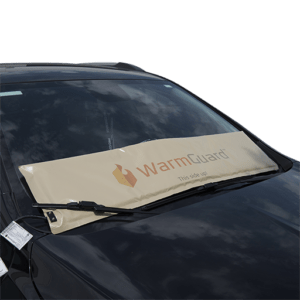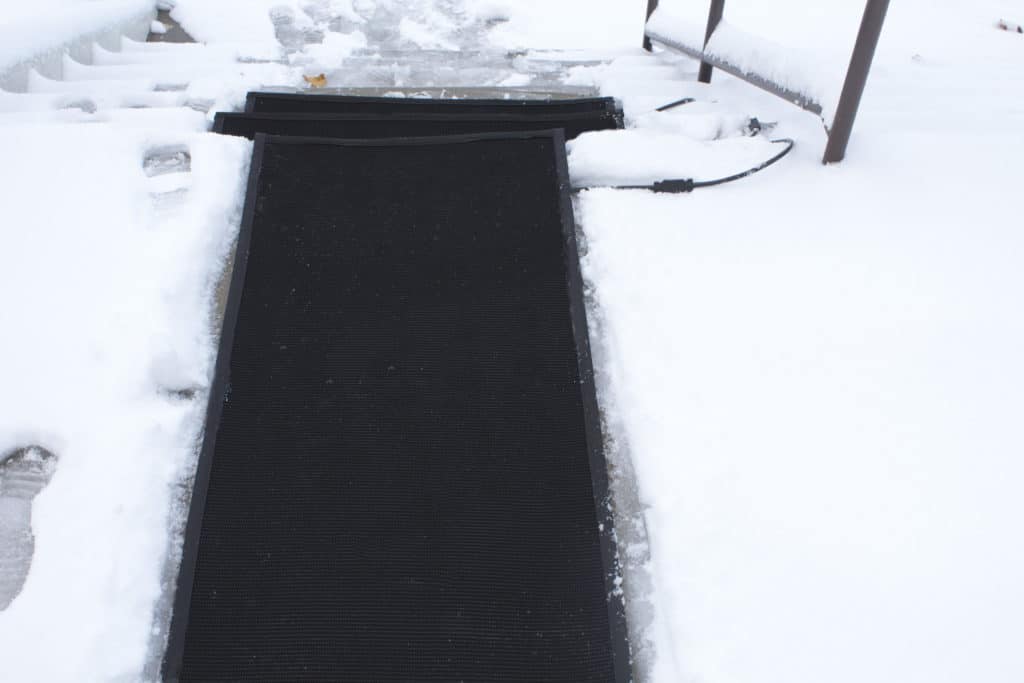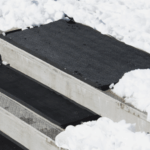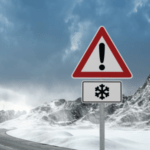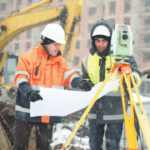In preparation for the winter months, it’s important to consider what measures you will need to take to exercise proper winter safety. Planning and preparing can save you significant money in the long run, protect your health, and prevent serious winter injuries. We suggest you consider the following winter safety tips as you plan how you will best maintain safety during cold, snowy, or icy weather.
Winter Safety Tips
Winter Home Prep
Before the winter sets in, check your roof, doors, and windows for leaks and address needed repairs. Ensure seals around openings are intact and secure.
Clean out your rain gutters to help prevent ice dams from forming and damaging your gutters and home.
Give your heating system a check-up to make sure it is clean, unobstructed, and serviceable. This is also a good time to replace or clean out heating vents and air intakes. Set your thermostat to the correct temperatures and heating schedules.
Check your carbon monoxide detectors to ensure they are functioning properly, and familiarize yourself with the symptoms of carbon monoxide poisoning.
Remove tree branches that are weakened or in danger of breaking and falling on structures during snowfall.
Shut off external water valves and sprinkler systems.
Winter storms can be very destructive for utility lines. Keep a sharp eye out for downed power lines and contact your utility company right away. Downed lines and melting snow or ice are an extremely dangerous combination. Never try to repair downed lines yourself, call the professionals!
Snow Shoveling Precautions
Purchase de-icing salts, grit, and snow shovels before the first snow strikes.
Before you start shoveling snow, make sure to warm up your body and muscles to help prevent injury.
Wear proper clothing and footwear while shoveling.
Use your chosen salt and grit mixture to help maintain traction as you shovel.
Take breaks to rest and warm up as necessary, especially during your first snow shoveling session of the season.
Winter Driving Tips
Watch the Forecast and Road Conditions
During the winter, consider downloading a weather app or signing up for mobile weather alerts. Keeping a close eye on Mother Nature will help you plan and possibly avoid driving during heavy storms or deep freezes. For longer drives, make sure you look ahead at the weather and road conditions along your entire route.
Many municipalities provide public access to transportation traffic cameras and road condition maps. Take a good look at your route before heading out the door so you can be prepared for the winter conditions that await you.
Winter Car Prep
It is important to prepare your car for winter before sub-freezing temperatures hit.
Check the temperature rating of your windshield fluid to ensure it will keep flowing when it drops below 32° F.
Cold temperatures can cause the air in your tires to compress and lose pressure. Invest in an inexpensive tire pressure gauge and keep it in your car so you can easily check your tires even when you are out and about.
Make sure you also have a durable ice scraper in your car before snow hits.
Even minor car trouble on the side of an icy road can spell real trouble for motorists. Before making longer drives during the winter, pack extra food and water in case of emergencies. Your body uses a lot more energy during the winter to stay warm, and a pack of emergency supplies will be desperately needed.
Have emergency roadside numbers and insurance info readily available for unforeseen winter car troubles. Familiarize yourself with your coverage and know what options you have at hand before you need help getting your car out of a snowbank!
Depending on where you live and work, consider switching to winter tires during the snowy season.
Safe Car Warming Practices
Popular Mechanics advises to only let your car warm up for as long as you need to get the defroster up and running. Be sure to NEVER warm up your car in an enclosed area or garage to avoid carbon monoxide poisoning.
For vehicles with conventional keys, you should also avoid starting your car and walking away while it warms up. Unattended, warming-up cars are a favorite target for wintertime car thieves! You should also educate yourself about your state’s anti-idling laws to help you avoid costly tickets.
Consider using a heated windshield defroster to save you time and hassle every time you need to leave your house. Windshield defrosters can also help warm your vehicle’s cabin so your car is ready to go when you are.
Workplace Winter Safety Tips
Frostbite and Hypothermia
Be familiar with and watch for signs of frostbite and hypothermia and get immediate medical attention for any symptoms. Employers should schedule outside work in shorter increments and break up large projects into smaller tasks. In addition, employers should establish a warm area for employees to take breaks from outside work.
Never wear wet clothing during cold temperatures. Wet clothing loses its ability to insulate and quickly transmits cold temperatures directly to the wearer’s body. It is always worth keeping a spare set of dry clothes around (especially socks, gloves, or underclothing).
Personal Protective Equipment
Winter conditions usually require changes to the footwear you typically use. Choose shoes and boots that provide adequate warmth and traction for ice and snow.
Look closely at the tags on your protective clothing and make sure you know which pieces are weather-resistant, waterproof, or cold-temperature-rated.
When working outside, ensure you and your employees wear appropriate clothing for your local weather conditions. Appropriate winter clothing includes waterproof boots, wind-resistant jackets, gloves/mittens, hats, and wraps for faces and ears.
Powerblanket Winter Safety Solutions
Powerblanket specializes in winter safety solutions to keep you safe and restore your peace of mind.
Windshield Defrosters
Powerblanket’s WarmGuard Windshield Defroster safely heats your car’s windshield and prevents snow and ice accumulation. Additionally, this product will raise the temperature of your car’s interior and make your car comfortable to drive without waiting around, so you can get to work on time. Our windshield heaters are also good for the environment by eliminating wasted gasoline and preventing exhaust emissions that pollute our air and contribute to winter smog.
Snow Melting Mats
Ground-thawing heated mats are designed to be left outside all winter long. You can create the coverage you need to fit your location with our various sizes available. Our ground-thawing and snow-melting blankets melt approximately 2 inches of snow per hour while operating. Save yourself from the time-consuming and backbreaking work of snow shoveling. Protect your concrete and landscaping from harsh de-icing salts. By adding these mats to your winter safety plans, you can restore your peace of mind every time you set foot outside the door.
Contact Powerblanket today to find the perfect ice injury prevention for your needs at 866.945.4203 or [email protected].
Frequently Asked Questions
What are the safety tips for winter?
To stay safe during winter, remain indoors when possible, dress in layers of warm clothing, and avoid overexertion by taking breaks during activities like snow shoveling.
What are the 4 P’s of winter safety?
The "Four Ps" of winter safety are people, pets, pipes, and plants, emphasizing the need to protect each from the cold by ensuring warmth and safety measures are in place.
What precautions should be taken in winter season?
Wear layered clothing made of wool or thermal materials to retain body heat, and ensure extremities are covered with gloves, hats, and socks to prevent cold-related injuries.
What are 3 winter storm safety tips?
During a winter storm, wear several layers of loose-fitting, warm clothing, opt for mittens over gloves, and wear a hat to minimize body heat loss.
Keep your steps, doorways and walkways safe this winter with our ground-thawing and snow-melting blankets.



